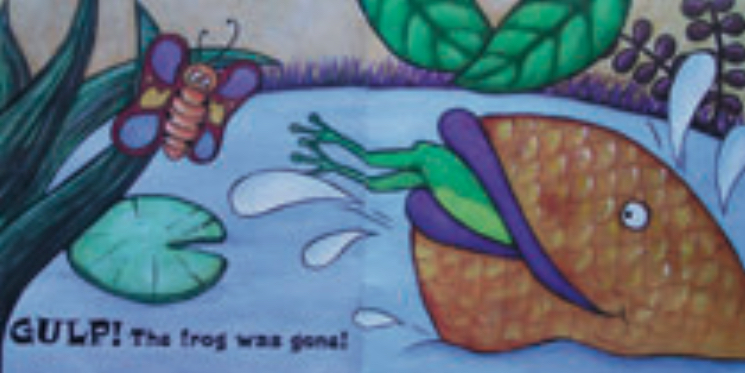Kei Tua o te Pae
Kei Tua o te Pae/Assessment for Learning: Early Childhood Exemplars is a best-practice guide that will help teachers continue to improve the quality of their teaching.
The exemplars are a series of books that will help teachers to understand and strengthen children's learning. It also shows how children, parents and whānau can contribute to this assessment and ongoing learning.
We are making improvements to our download-to-print functionality. So if you want a printed copy there are PDF versions available at the bottom of the main cover page.
Exemplars – Ngā tauaromahi
-
Looking back through your portfolio
-
19 June
Here are Alice and I taking a browse through her portfolio. “I know the words,” Alice keeps saying to me. We look at each page. “In the family corner I like to play with my friends, Finn and Taylor,” says Alice running her finger along the line of words.
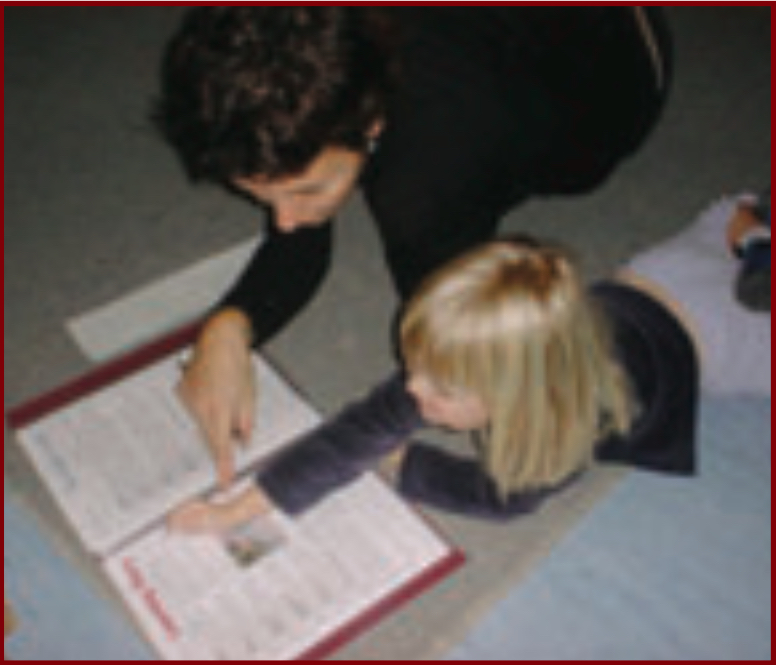
The next page is an old story of when Alice was beginning to write her name. “I do it now and I already have my birthday and I know how to do it.”
The next page is when Alice had been playing “Doggy, doggy, who’s got the bone?” On seeing this picture Alice begins to sing the song.
We are now at the end of the entries and Alice turns to me and says, “I need some more photographs of me, don’t I?”
Yes, I agree with you, Alice. I look forward to reading other stories about you.
-
-
Daniel and his books
-
Child: Daniel (14 months)
Teacher: Shaz
Date: 1 August
A learning story
Daniel was sitting on my knee while I read the story about a pudgy pig that visits lots of different animals on his way to find his favourite pigsty with all his little pig friends.
Daniel pointed to the animals, squealing with excitement and bouncing up and down on my knee. He loved lifting the flaps to discover a different animal each time, saying “eyes” emphasising the “s” on the end. He often turned to me with a big grin from ear to ear saying “eyes” again and again. I would say, “Turn the page, Daniel” and he would. Sometimes he would turn too many pages so I would flip them back so we didn’t miss seeing any of the animals.
Daniel was extremely careful and gentle when lifting the flaps showing great respect for my “special” book. When we came to the last page I shut the book explaining it was the end. Daniel indicated that he wanted to read the story again so we did and then once more after that.
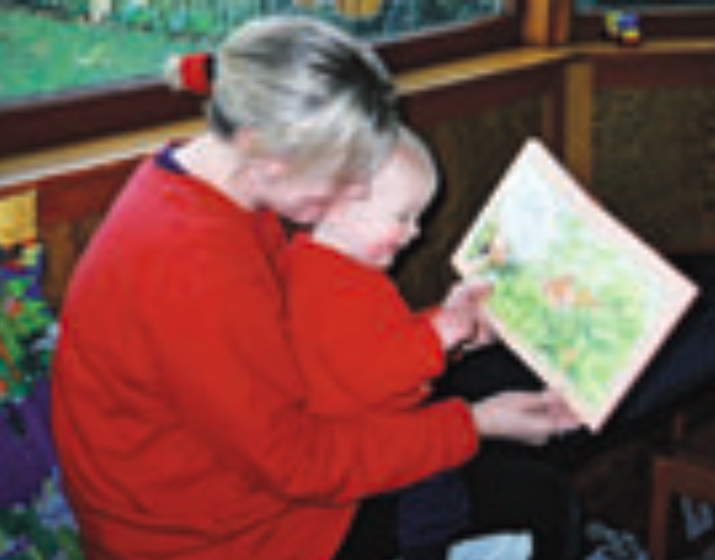
Interpretation
Books are prompting Daniel to use new words. He is able to make connections between words he can say and the illustrations in books.
He is very confident at playing a role in shared reading with teachers. Daniel obviously has a love for books!
Question: What learning did I think went on here (ie. the main point(s) of the learning story)?
What next?
- Read stories again and again with Daniel.
- Continue to provide plenty of opportunities for Daniel to “read” independently.
- We will demonstrate that we share Daniel’s pleasure in discovering books and their stories.
- We will include Daniel in group reading times, using a variety of methods to tell stories – large books, books with tapes, interactive tactile books, pop-up books, felt picture stories.
-
-
Hikurangi
Date: 5 June
Examples or cues A Learning Story
Belonging
Mana whenuaTaking an Interest Finding an interest here – a topic, an activity, a role. Recognising the familiar, enjoying the unfamiliar. Coping with change. Hikurangi and Joel held hands and were very quiet and focused during the karanga as we were called onto the marae – as were the other children. Hikurangi liked the waiata in the wharenui, especially “Whakaaria mai”, which both tangata whenua and manuhiri sang together before the whaikōrero began. After the pōwhiri, Hikurangi drew a picture of a tarantula which he said would live in Tāne’s forest! At home, he talked about Masato’s dad speaking in the wharenui and remembered seeing his koro (grandad, my father) doing the same on our marae. He loved the wharekai too because “we all eat together”. It was a wonderful, warm, and positive experience. Kia ora.
Frances
Well-being
Mana atuaBeing Involved Paying attention for a sustained period, feeling safe, trusting others. Being playful with others and/or materials. Exploration
Mana aotūroaPersisting with Difficulty Setting and choosing difficult tasks. Using a range of strategies to solve problems when ‘stuck’ (be specific). Communication
Mana reoExpressing an Idea or a Feeling In a range of ways (specify). For example: oral language, gesture, music, art, writing, using numbers and patterns, telling stories. Contribution
Mana tangataTaking Responsibility Responding to others, to stories, and imagined events, ensuring that things are fair, self-evaluating, helping others, contributing to programme.
-
Flopsy and Mopsy
Child: Aimee
Teacher: Chrissy
Aimee brought her “Peter Rabbit” book to kindergarten. I began reading the first page and the names Flopsy and Mopsy caught Aimee’s attention.
“Those rhyme!” she exclaimed.
I wrote the words “Flopsy” and “Mopsy” on a piece of paper.
“Which one do you think says “Flopsy?” I asked.
Aimee thought for a moment and pointed to the word and then she said, “And that must be Mopsy!”
I asked her to think of other words that could rhyme with these names. Aimee took great delight in rattling off a list of rhyming names. I added “Lopsy”, “Copsy”, “Nopsy”, “Popsy”, and “Bopsy” to the list.
“How about the Peter one?” she asked.
“Sure,” I said. “I’ll write them down.” Aimee suggested “Deter”, “Beter”, “Keter”.
“Mmmm, what about ‘Weter’?” “Can you write that one?” I asked.
Aimee looked at the list carefully and then wrote “weter”.
“Well done, Aimee!” I said. “You wrote that beautifully.”
“I’m going to show Dale,” said Aimee and she did.
Review
Aimee and I spent a few minutes together looking at her book and in that short space of time, so much learning took place. Literacy involves, among other things, the ability to understand the relationship between sounds and letters. When Aimee wrote the word “weter”, she was using great code-breaking skills – the initial sound is “w”, but the rest of the word stays the same, so comparing it to “Deter”, “Beter”, and “Keter”, “Weter” will look like this...
Aimee has an obvious delight in words and sounds, and this enhances her enjoyment of books and stories. She can hear the phonemes in words and is able to make up a list of rhyming words.
-
Joshua’s mana reo
-
Joshua has a pretty good understanding of what is going on around him. He can recognise different faces and he expresses his feelings through body language and facial expression.
Joshua is very vocal and he will babble away while he is playing with toys and during interaction with his peers.
We have been encouraging Joshua to sound out simple kupu like “kia ora”, “hōmai”, “inu”, “kai”, “pakipaki”, “ihu”, “waha”, etc. He can understand and respond to simple instructions like “pakipaki”, “pūkana mai”, “kanikani”, and “Kei hei to ihu?”
Joshua enjoys waiata and music. He knows the actions to some of the kōhanga songs and his favourite songs are:
- “Pakahia o ringa” – Joshua recognises the tune and the words.
- “Pakipaki” – he will clap his hands whenever the song is being sung while bobbing up and down.
- “Kei runga te rākau” – Joshua also recognises the tune to this song and he will automatically put his hands up to his eyes (like a ruru) when he hears the first line of this song being sung – “Kei runga te rākau i te pō, ki mai te ruru kua awatea ...”
Joshua likes watching the older boys doing the haka and loves showing off his own pūkana.
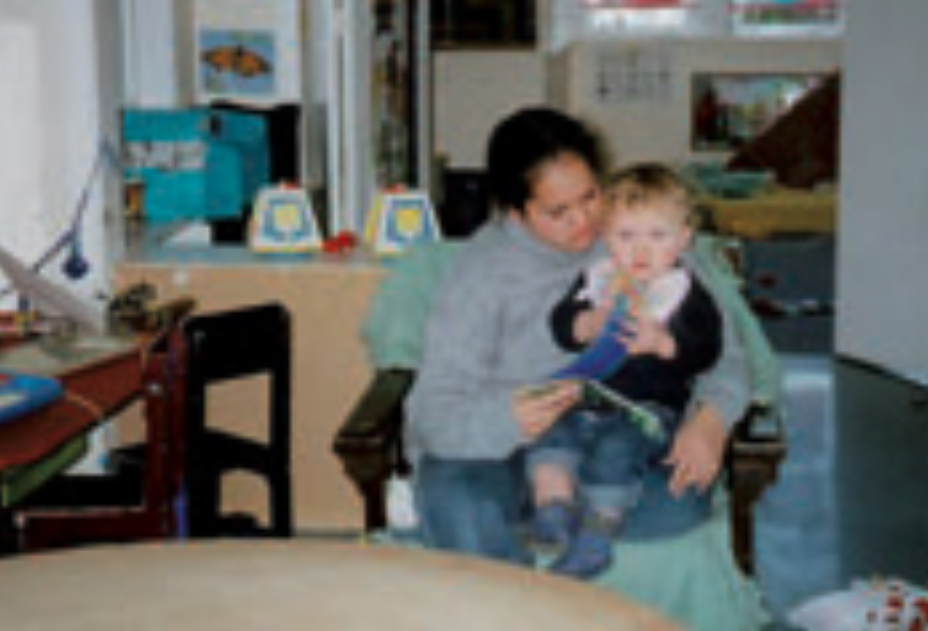
Link to Te Whāriki:
The programme includes action games, listening games, and dancing, all of which use the body as a means of communication.
Over the past 3 weeks Joshua has shown an interest in books. He will pick a book and give it to a whaea to read, often getting her to read the same book over and over again. He likes to spend his afternoons chilling out and reading books for a good hour and a half. He particularly likes the hard-covered books because he can turn the pages by himself.
I have tried a few exercises with Joshua over that time by reading him one book about four times, slowly sounding out key words and names of animals. I then asked him simple questions about each page, for example, “Kei hea te ngeru?” “Kei hea te kurì?” “Kei hea te panana?” Joshua will answer by pointing to the pictures on pages.
On 1 August Joshua said “nana” while pointing to a picture of a “panana” in a book that we had been reading.
Reading books is an excellent way to develop and extend Joshua’s language skills, starting with visual recognition and pronunciation. Once he is able to sound out words, the next step would be to extend his vocabulary by introducing a wider range of books.
Link to Te Whāriki:
Adults are prepared to read the same story again and again.
Strategies: Teachers will use repetition, sounding out words slowly and encouraging Joshua to repeat after us where appropriate.
Continue to sing his favourite kōhanga songs to him and introduce new waiata.
-
-
Rahsaan and quidditch
-
Child: Rahsaan
Teacher: Carol
Date: 28 February
Examples or cues A Learning Story
Belonging
Mana whenuaTaking an Interest Finding an interest here – a topic, an activity, a role. Recognising the familiar, enjoying the unfamiliar. Coping with change. Because there has been such strong interest in playing quidditch created by the “pipes”, I brought Harry Potter and the Philosopher’s Stone18 to kindergarten.
After mat time I told the boys with the pipes that I had the book and Rahsaan was immediately interested and asked me where it was. I got it from the office, took it outside and suggested maybe we could find the part in the book about playing quidditch.
We read the part about the quidditch stadium and how you play, and Rahsaan knew you need a “snitch” and that Harry’s arm had been squashed by a ball. He described it very eloquently.
Then he kept suggesting parts of the story to find – so quickly that I was having trouble keeping up!
“You know about Dobby ... and the three-headed dog ... and the train where they didn’t go on it and ... the spider and ...” He was absolutely amazing being able to recall so clearly.
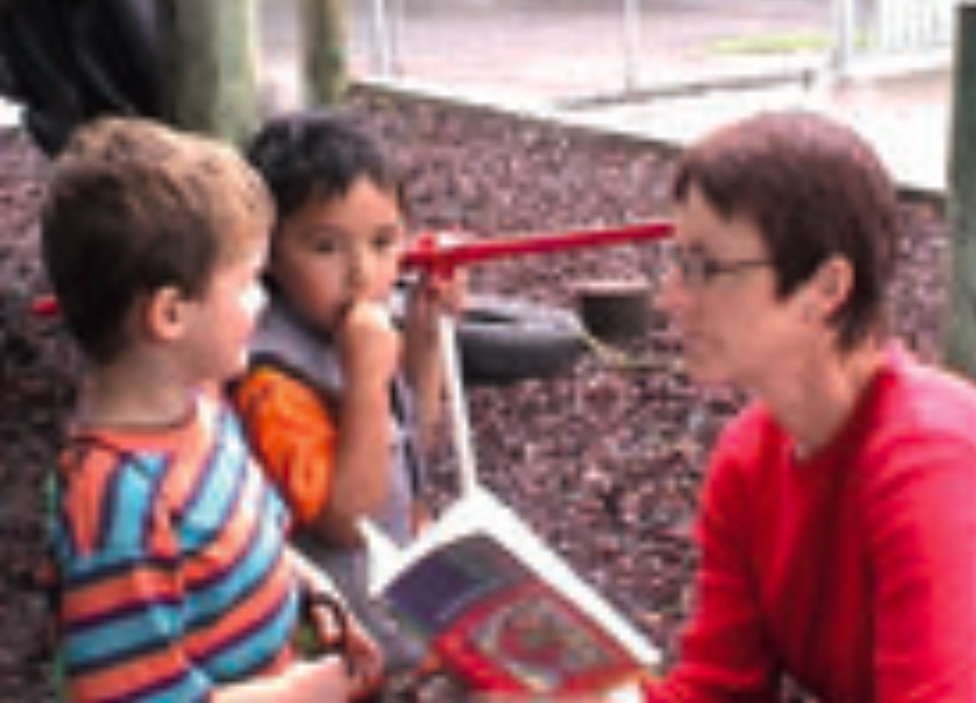
Well-being
Mana atuaBeing Involved Paying attention for a sustained period, feeling safe, trusting others. Being playful with others and/or materials. Exploration
Mana aotūroaPersisting with Difficulty Setting and choosing difficult tasks. Using a range of strategies to solve problems when ‘stuck’ (be specific). Communication
Mana reoExpressing an Idea or a Feeling In a range of ways (specify). For example: oral language, gesture, music, art, writing, using numbers and patterns, telling stories. Contribution
Mana tangataTaking Responsibility Responding to others, to stories, and imagined events, ensuring that things are fair, self-evaluating, helping others, contributing to programme. Short-term review
Rahsaan was absolutely captivated by the reading of the book to the extent that Jaiden had to wait before Rahsaan would come and play. He was totally immersed in the story and just kept saying “Nahh, Nahh” when Jaiden asked him to come. He was too busy listening.
What next?
Rahsaan was absolutely captivated by the reading of the book to the extent that Jaiden had to wait before Rahsaan would come and play. He was totally immersed in the story and just kept saying “Nahh, Nahh” when Jaiden asked him to come. He was too busy listening.
Rahsaan has amazing recall. We wondered if he has had the book read to him or how many times he has seen the video because he remembers whole episodes quite clearly.
Rahsaan obviously enjoys stories and this is such a great start to reading and writing.
Parent’s voice
We agree that Rahsaan’s memory of all things is fantastic. Right from the age of 1–2, he would recognise places as we passed them in the car and know instantly where we were heading, or that they were places where something we thought was so trivial to us, but obviously memorable for him, happened.
Rahsaan has seen the movie only once! But anything he watches, he gets very engrossed in if it’s something that interests him.
At home, Rahsaan has little patience to sit down and write or read. He would rather play outside or with his cousins. But there is the odd occasion where a book may interest him and he would like to read it over and over...
Rahsaan loves to role-play. He often tends to dominate the roleplay amongst his cousins and can sometimes be a little bossy. I wonder if this is the case at kindy? He has a creative and imaginative way of playing, and superheroes seem to be the “in” thing at the moment. We encourage him to continue his choice of play as long as it doesn’t start portraying violence or guns etc. We are pleased to hear that Rahsaan does demonstrate skills of turn-taking at kindy.
-
-
Shai-Li makes a friend
-
Child: Shai-Li
Teacher: Judy
Date: 20 May
I noticed Shai-Li and Talia sitting together in the book corner. The two of them were looking at a pictorial Hebrew dictionary. There was animated conversation between the two of them – Shai-Li was pointing to pictures and saying the Hebrew word, while Talia was doing the same and using the English word. At one stage I heard Shai-Li saying ”What’s that?” as she pointed to a picture. Then she replied to herself and said, “Hinei mayim.” After a while I noticed Shai-Li went off to the mat and took out a puzzle. Talia followed her and together they worked out how to complete the puzzle. As I approached them, Talia said to me, “Shai-Li is my friend”!
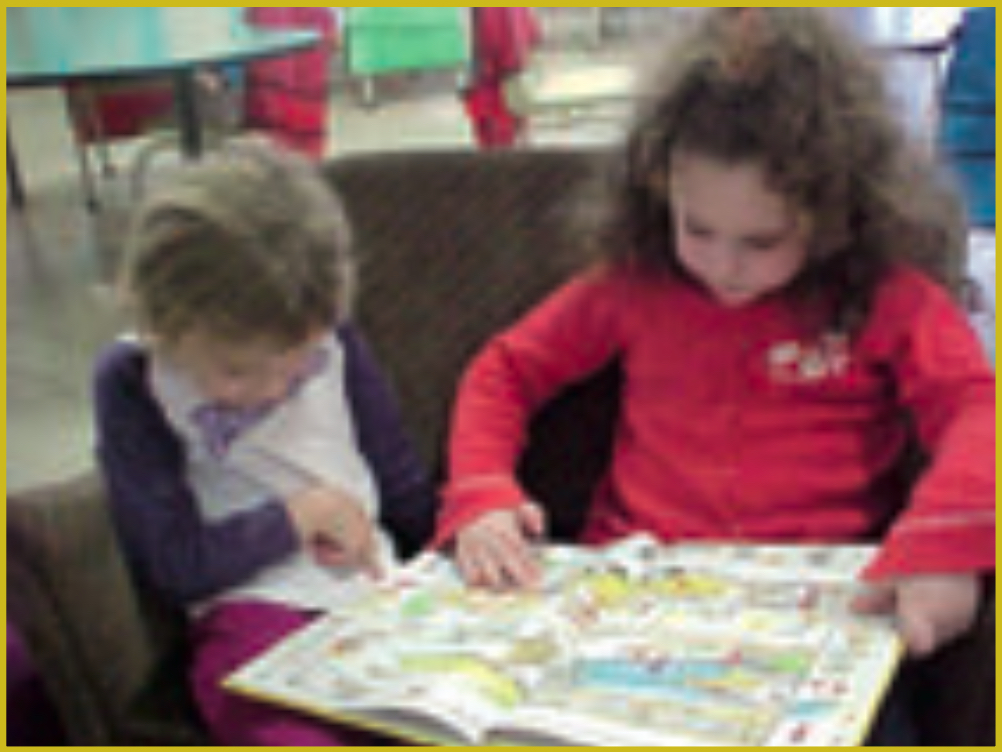
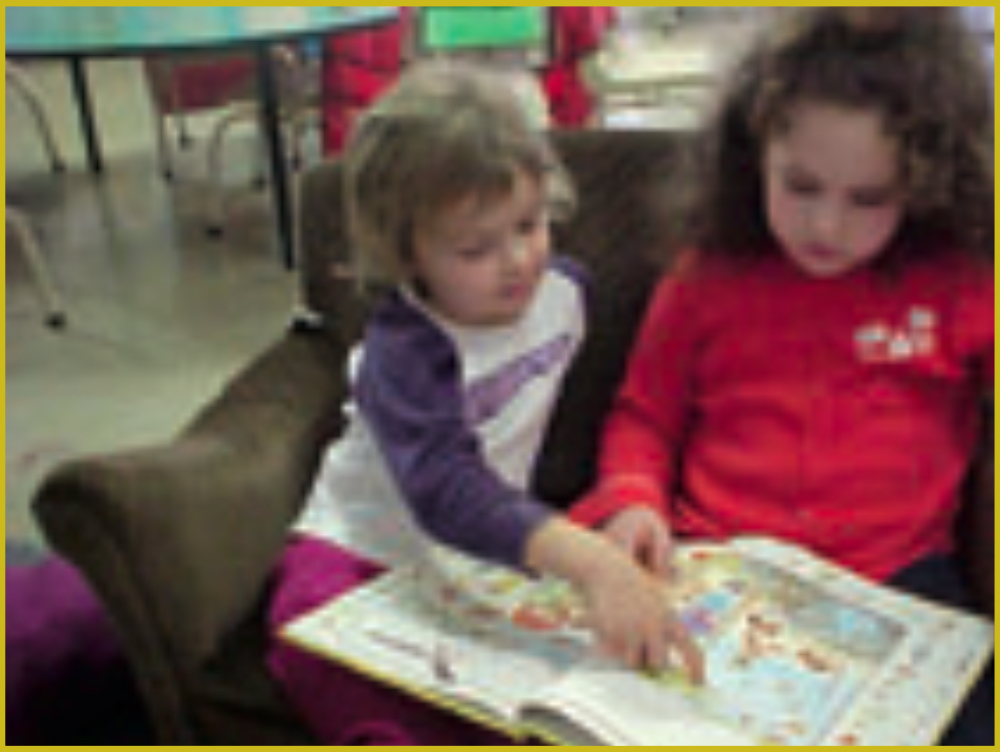
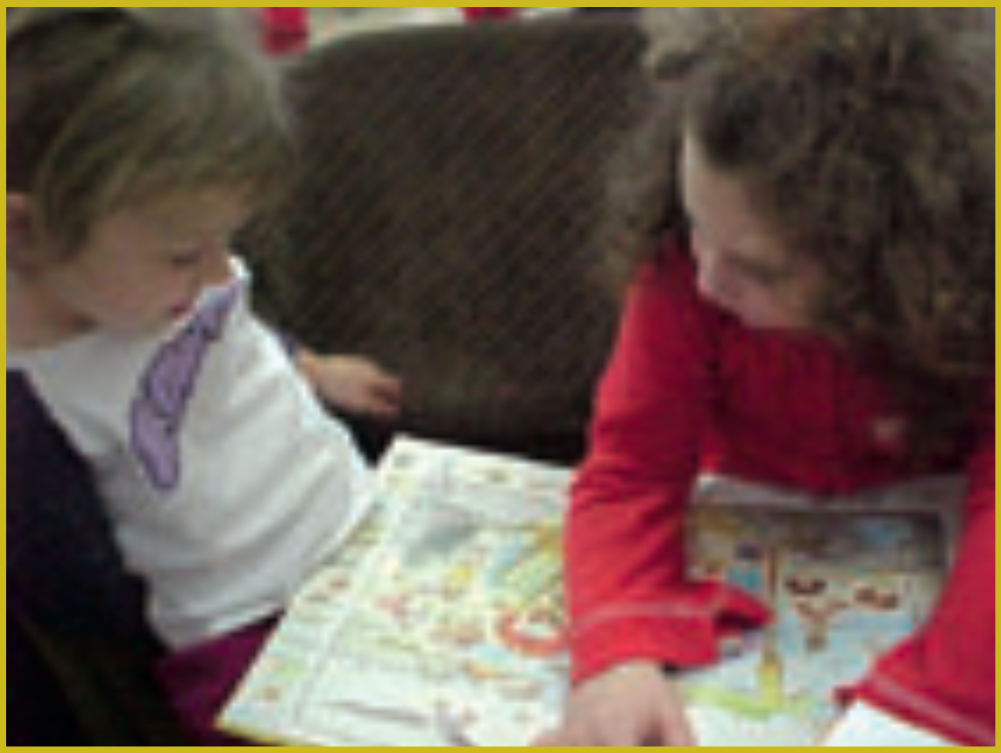
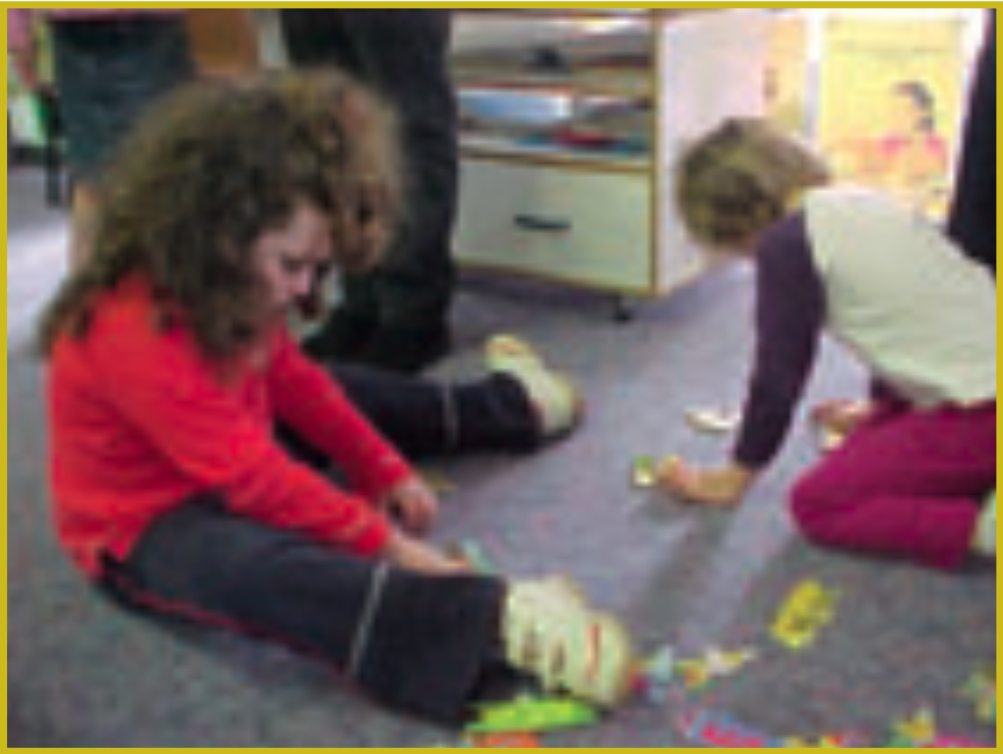
Short-term review
Kol Hakavod Shai-Li, eich yashavt im Talia be pinat sefarim. At yashavt be savlanut ve Talia hizbart lach et ha milim be Anglit. Ani ra-iti she hayit meod mapsoet lashevet beyachad im Talia. Ani roah she at be-emet menasah lihiyot chavera im kulam – at tamid mechayechet, ve zeh chiyuch kol kach yafah. Oe-lai be pa-am haba at yechola lehagid yoter milim be Anglit! Mah at choshevet?
Well done Shai-Li, how you sat with Talia in the book corner. You sat patiently, while Talia explained the words to you in English. I saw that you were very happy to sit together with Talia. I see that you are really trying to be friends with everyone – you always smile, and your smile is so beautiful. Maybe next time you could say more words in English. What do you think?
Parent comment
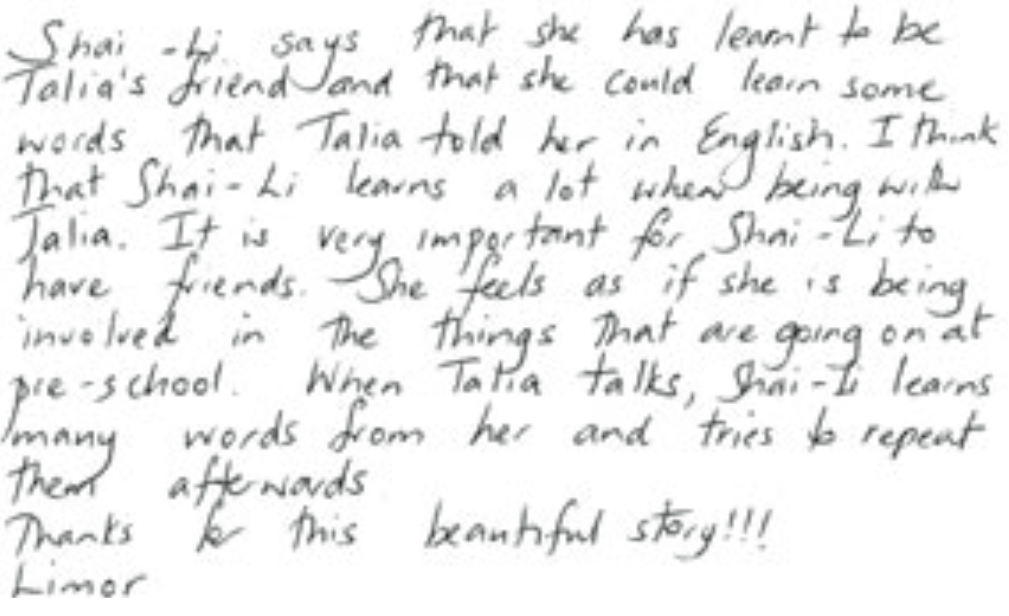
What next?
I would encourage Shai-Li to perhaps invite Talia over to play after school as they seem well suited and Talia appears to be sensitive to Shai-Li’s needs. We notice that the children have instinctively started inviting her to join in with their games. The others who understand Hebrew have translated for her and encouraged her to talk in English. As the weeks have gone by, Shai-Li has become an integral part of the class.
-
-
The Snipe and the Clam
-
Child: Samuel
26 March
Daphne has been helping us at kindergarten today. We are getting much better at singing our Chinese song. Samuel has drawn a picture. Daphne tells me it is about one of his favourite Chinese stories. I wrote the story down as she told it to me and we discussed ways in which we could use the story in our programme.
What next?
I think we could look for more opportunities for Samuel to represent and tell his favourite story.
24 April
Daphne told me some more details of the traditional Chinese story.
Today Samuel drew some pictures that I made into a book. I read the book to the group at the end of the morning.
Daphne told me about the pictures Samuel had drawn and we had an interesting conversation about Samuel at home. He is interested in traditional Chinese stories. He listens to them on audio-tape and remembers many details afterwards. He draws pictures about the stories from his imagination. He likes to listen to traditional Chinese poetry and can recite some of it. He likes traditional Chinese paintings with mountains, mist, birds and flowers – brush paintings. Samuel is learning to play the violin.
The Snipe and the Clam (As told to me by Daphne, Samuel’s mother)

The fight between the snipe and the clam A quarrel that benefits only a third party.
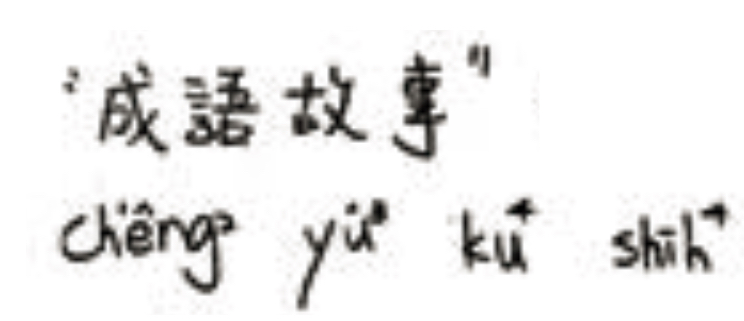
A quarrel that benefits only a third party
Once upon a time there was a big bird called Oo. He had a big, strong beak. One day he was hunting for food when he found a big shellfish. It was very big and heavy.
The bird tried to eat the shellfish but the shellfish closed up its shells. The bird’s beak got stuck between the shells.
The bird said, “If you don’t open your shell, you will not be able to drink. You will be thirsty and then you will die.
The shellfish said, “I will not let you eat me.”
The shellfish was very heavy – too heavy for the bird to fly with it in its beak.
“You will die as well,” said the shellfish, “because you can’t eat with your beak stuck in my shells. You will die of hunger.” They argued and argued.
Finally a fisherman found them locked together and caught both of them so they were both losers.
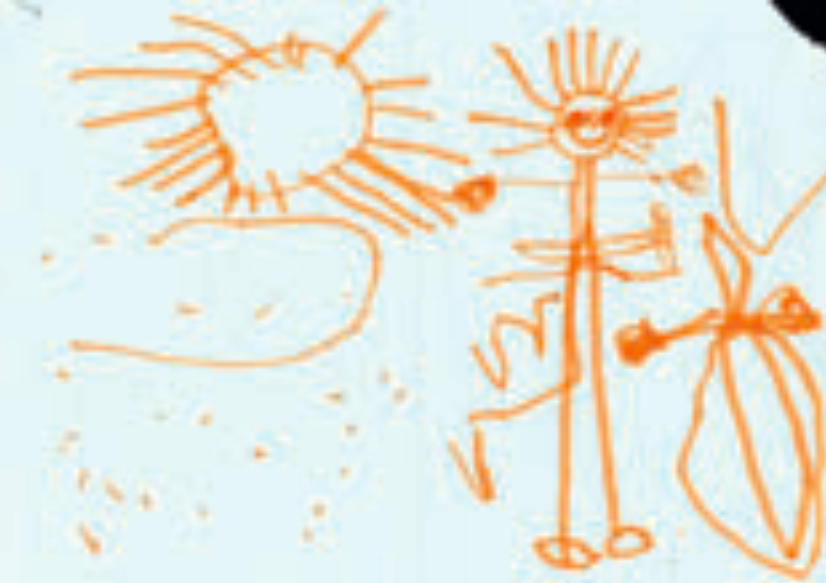
22 May
Because Samuel was so excited about acting out The Snipe and the Clam with the dough models yesterday I asked him if he would help me tell the story to the whole group at mat time. He agreed with enthusiasm and stood out the front holding the pictures. I told the story with Samuel adding some words in Mandarin and also showing us with facial expressions how the clam and bird felt. Everybody clapped Samuel afterwards.
Short-term review
This was a great boost to Samuel’s self esteem.
A good opportunity for Samuel to teach us some words in Mandarin. Samuel also took the opportunity to teach us how to say some English words correctly.
What next?
Encourage Samuel to make simple puppets of the characters in the story.
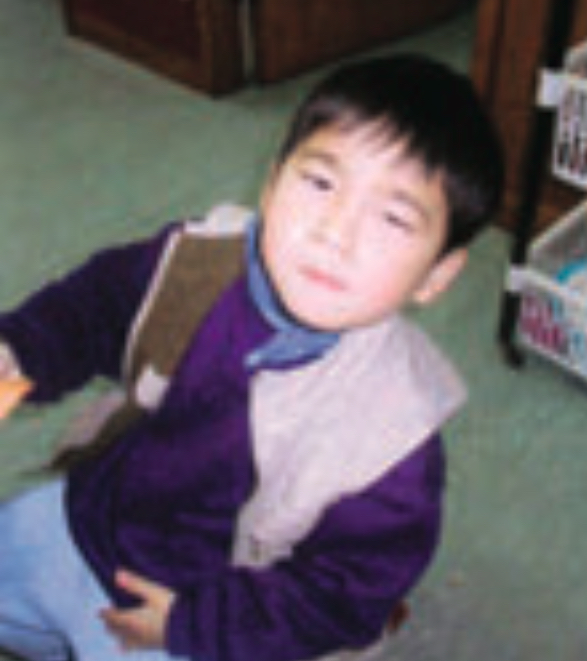
Samuel showed us how the snipe was feeling.
-
-
Tiari wants to draw
-
A learning story
Whenever I sit down to do work at the table Tiari always wants to be included.
She sees me and my husband working at the computer. Tiari can turn on the computer by herself and immediately moves the mouse (as she has seen us doing). Then she taps the keys on the keyboard. It’s a bit of a stretch for her, standing, but she manages and can just see the screen. Here is a sample of her work on the computer and writing with me.
Tiari also loves writing with pens. She sits beside me at the table and quite happily writes away for quite a length of time. She even tries to add her contribution to my work! She is a budding author! Mum.
dsxzh61166t,. juhggsxzzgytswygt3azgdevgysagsgvjkb,mn swxmn dmn fxdxmn d,mn k
rexz sssssssx,mn xxxsWritten by Tiari, 25 May (16 months)
A Learning Story
Child: Tiari
Date: 7 November
Teacher: Liz
Tiari wanted a pencil to draw on some paper. She decided to draw on the easel first as I had put some paper there. She got my hand and took me over to the easel and then put the pencil in my hand. I wrote her name and then drew a circle. Tiari took the pencil out of my hand and proceeded to try and draw a circle herself. She tried so hard and did lots of pretty good circles. She then came and joined the others at the table to do more drawing and colouring with the crayons. This activity went on for quite a long time.
Short-term review
Tiari has some really good non-verbal language and each time she “asked” me to do something I knew just what she wanted – good concentration skills and hand–eye co- ordination going on here. When she was trying hard to do her circles she leaned really close to the paper to make sure she had the right angle. We are trying to give Tiari the opportunity to do lots of writing and drawing each day.
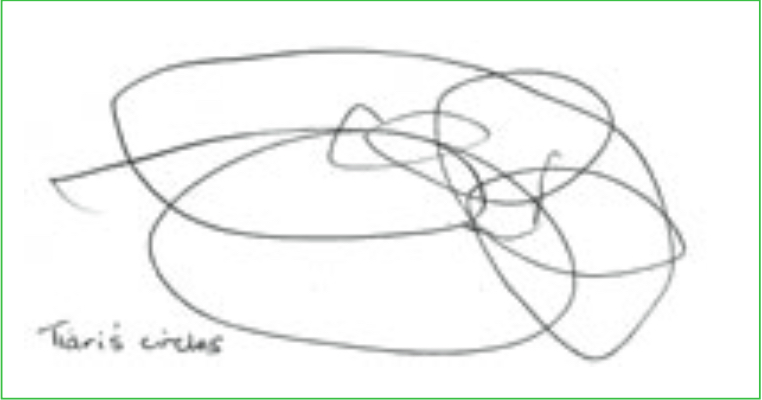
Grandparents’ comment
Tiari knows all about her book. When I opened it, she climbed up on the couch and sat on me comfortably, and as I turned the pages, she “told” me all about the pictures. She liked to point out the other children and obviously had lots to tell me about them.
Over the last 2–3 weeks she has become so much less dependent on adults, and has really made a big shift in thinking for herself and decision-making. We also notice how she has developed her recognition of places that are meaningful to her – Aunty Barbara’s house and the playground (which is some distance from the road, but Tiari was busy pointing to it and trying to undo her seat belt.) It is a privilege to watch and enjoy her personal development.
Nana and Poppa
-
-
William’s map drawing
-
Child: William
Teacher: Jo
22 November
William’s map drawing is amazing! We sat down together and looked at the map that is on the wall at our kindergarten. I asked William if he knew where the kindergarten is on the map. He wasn’t too sure so I showed him Garnet Road and where the kindergarten is. He said to me, “You know where my house is, aye Jo. You have been to my house.” I confirmed this and we then looked on the map to see where William’s house is. We looked at all of the roads and I asked William how we would get to the zoo from the kindergarten. We walked our fingers along the map and found the zoo. We talked about which way the bus would go and William thought that it would have to turn around to get to the zoo. “I know there is a roundabout it can go around,” he said.
Once William had decided on the right way to go to the zoo, he set to work to draw his map. He looked again at the map on the wall and then started to draw onto his paper. He kept looking up at the map to check where he was up to and then drew again. The map was very clear with the kindergarten on it and the long drive-way. William remembered to draw the roundabout and then connected his road up to the zoo.
I wonder if we will be able to use your map to guide us to the zoo, William? The people from the zoo have sent us some maps and you might like to have one to show your mum around the zoo and find where your favourite animals are.
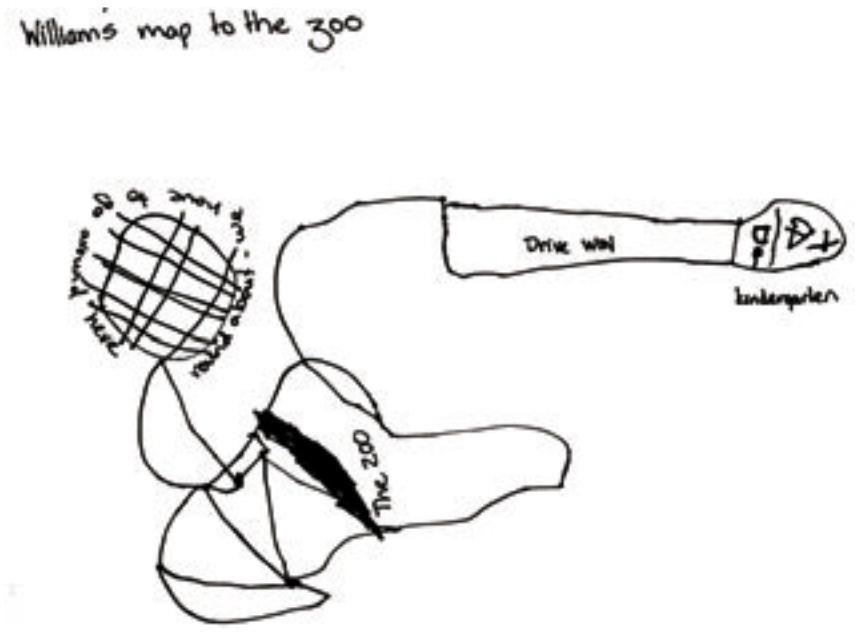
-
-
Zachary’s proof-reading
-
Child: Zachary
Title: Writing the café story
Teacher: Robyn
Date: 26 July
A learning story
Zachary knows that Kerri has a story about his café to write. He has been waiting for days. He has been on a big café theme and he knew that Kerri had taken photographs and made notes.
On Wednesday he said to me, “I am waiting for Kerri to write my café story.” I checked with Kerri and she said that she had promised Zachary that she would write it on Friday afternoon. Zachary knew that Kerri would be using the computer in the sleep room and he was keeping a close eye on her. About 2.30 pm Kerri came out and asked me to proof-read the story. Suddenly Zachary was there by my side looking at the pictures, explaining to me what was happening and telling me all about it.
I was putting an arrow by the few lines that needed adjusting and as soon as I altered a word he reminded me to put an arrow there so that Kerri would see it!
Short-term review
When Kerri had finished she invited Zachary into the room and they sat down together. As Kerri read the story he laughed, absolutely delighted over the finished story.
He wanted to take his portfolio home that night so that he could show Mary, his mum.
Zachary understood the entire process of his imaginary play becoming a story that then could be read to him. He understood the different roles people played to make that happen. He was the story maker and he knew that Kerri’s role was to be the photographer and the writer. He then discovered that sometimes someone proof-reads the story, and that was another part of the writing process. In fact he joined in on the proof-reading!
What a lot you understand about writing stories, Zachary. How patiently you waited. It is wonderful to see the pleasure you get from your learning stories and to know that they are so important to you.
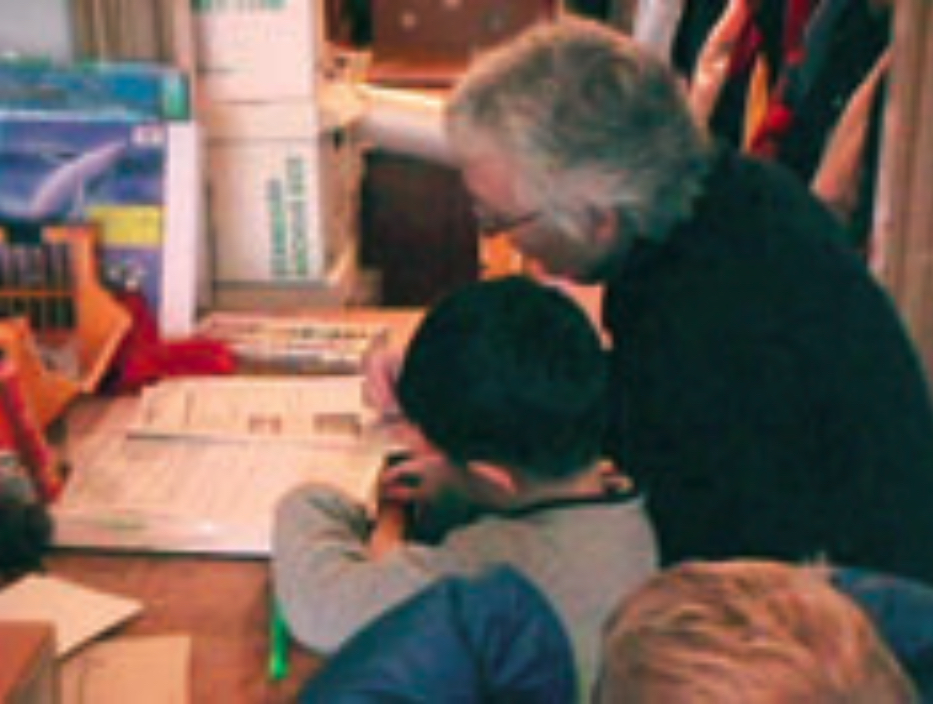
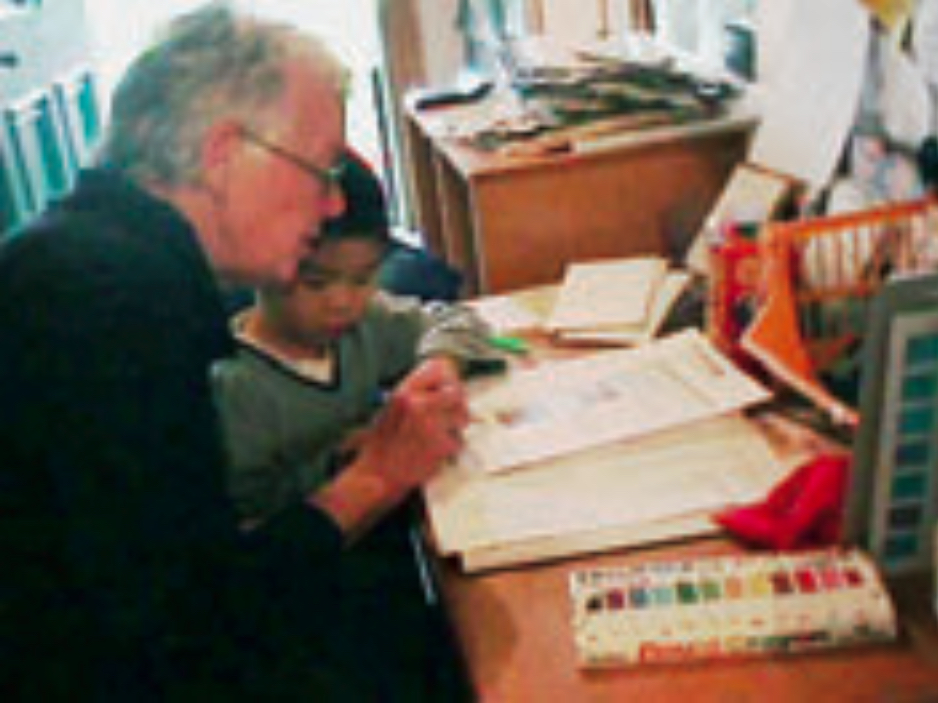
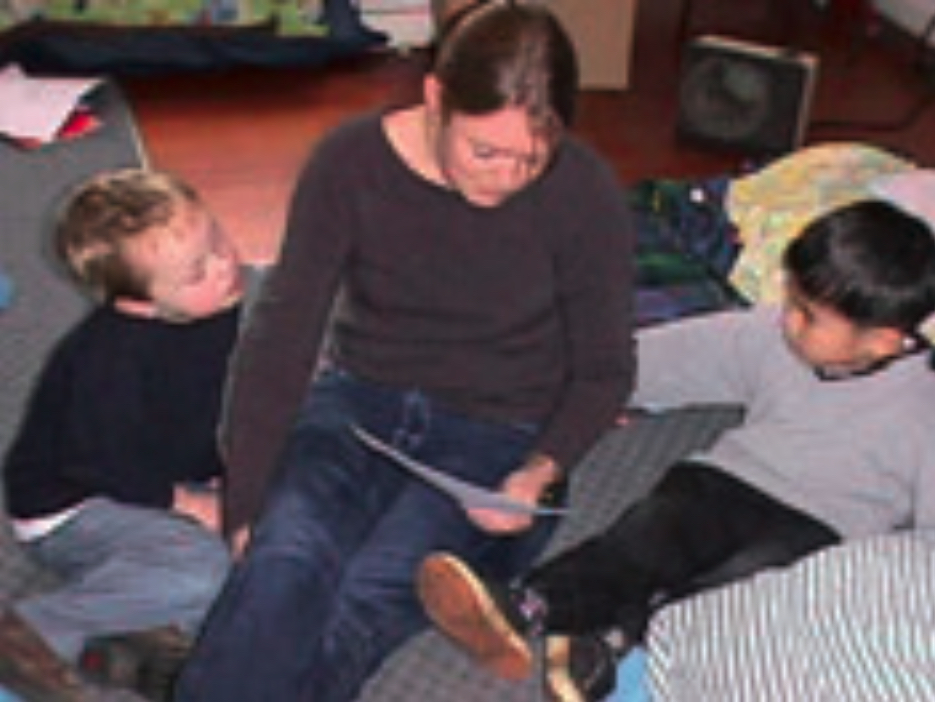
Parent comment
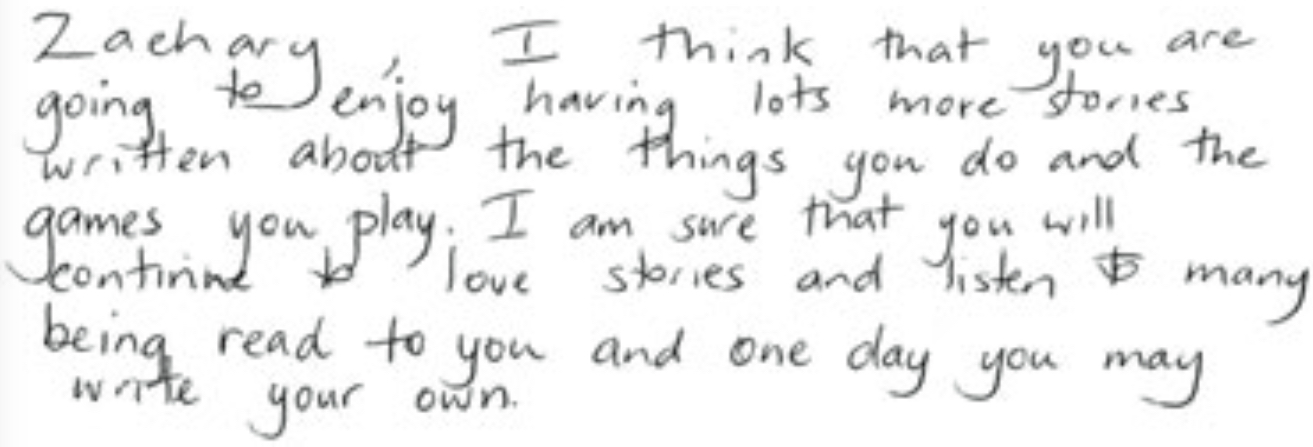
-
-
A sticky end
-
Child: Joshua
Teacher: Chrissy
A learning story
Joshua peered over my shoulder as I read the book The Icky Sticky Frog.21 The plot involves the frog spotting his hapless prey and then slurping them up with his long, sticky tongue. Near the end of the story, the frog spots a butterfly. However, this time, instead of the frog eating his quarry, a fish gulps down the frog. Joshua looked at the last picture for a while and then he said, “The butterfly is smiling.”
“Mmm,” I agreed. “Why do you think that is?”
“I think the frog should be smiling, but he’s inside the fish.”
“Do you think the ending should be different?” I asked.
“Yes,” said Josh.
“What do you think the ending should be?” I asked, as we continued to look at the sorry state of affairs.
“I think the fish should eat the butterfly!” said Josh, his eyes lighting up with glee.
Short-term review
We often look at books and read stories around the tea table when the groups are small and receptive. Josh was itching to put his bag away and play outside, but the book captured his interest. I found his comment about the ending of the book very interesting as it has also touched upon a note of disappointment I feel when reading some stories (The Gingerbread Man is one that comes to mind ...). I found a handout that was supplied at a recent workshop I attended on literacy. The handout described four roles of a literate person. (Later, in 1999, Luke and Freebody changed this descriptor to “four literacy practices”.22)
One of the roles is that of text analyst, where the participant challenges the view represented in a particular text. And I guess Joshua did just that. We recognise that literacy involves so much and that it is not only about reading and writing. It involves the ability to look critically at texts too.
-

